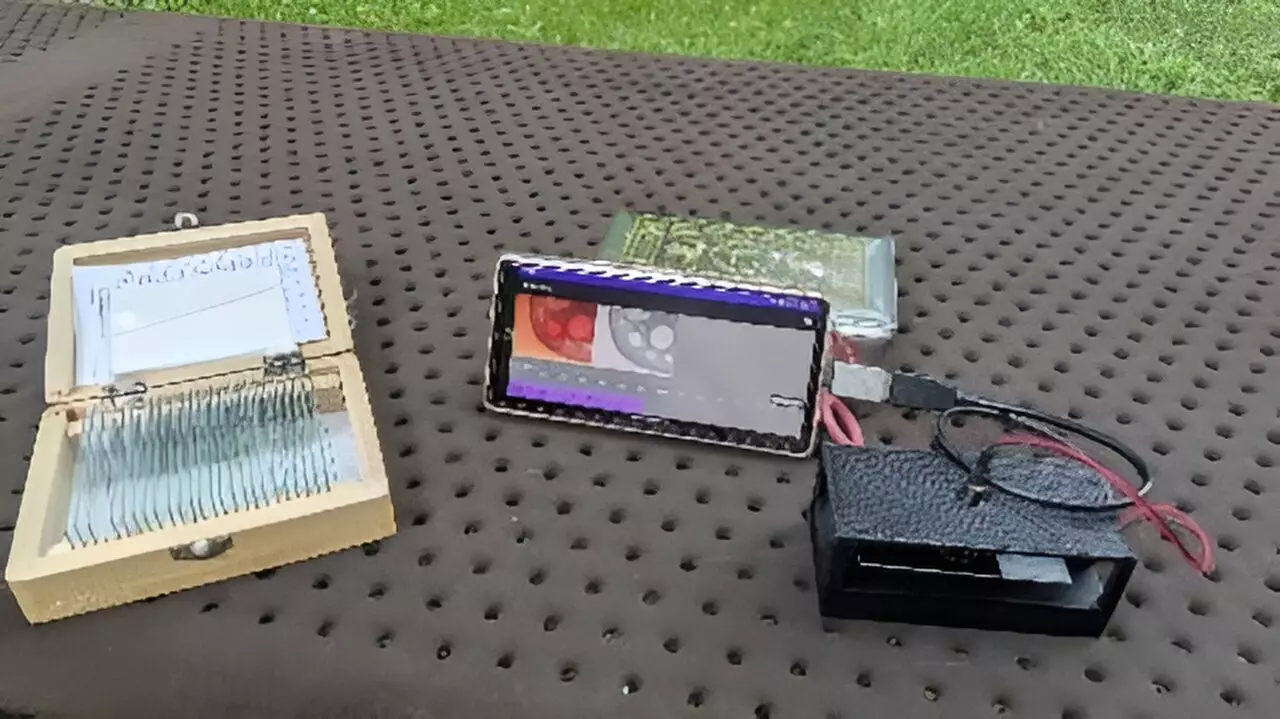The advent of smartphone technology has consistently proven to be a beacon of accessibility and efficiency in multiple fields. Now, researchers from the Tokyo University of Agriculture and Technology have pushed the boundaries of portable technology by developing a smartphone-based digital holographic microscope. This innovative device is poised to transform how we approach three-dimensional (3D) measurements, particularly in educational and health sectors that often grapple with resource limitations. Unlike its predecessors, which were constrained by cumbersome optical systems and the need for personal computers, this new microscope combines compact design with advanced capabilities—all within the hands of everyday users.
The principle behind this digital holographic microscope revolves around the capturing of interference patterns that emerge when light interacts with an object. Traditionally, microscopes requiring expansive optical setups not only limited where they could be used but also demanded complex post-processing systems on PCs. However, the researchers, led by Yuki Nagahama, have reinvented this model, utilizing a simple optical setup crafted through 3D printing and real-time processing on smartphones. This innovation stands to democratize advanced 3D imaging technology, making it not only affordable but also portable, thereby having the potential to reach every corner of the globe.
A Leap Towards Real-Time Imaging
One of the standout features of this new microscope is its real-time hologram reconstruction capability. The device allows users to interactively zoom and manipulate the reconstructed images via touch gestures on their smartphones—a far cry from the static and complex interfaces of traditional systems. Not only does this feature enhance user engagement, but it also fosters a more intuitive understanding of microscopic phenomena, making it an excellent educational tool for schools and universities. The burgeoning interest in STEM fields can greatly benefit from the ability to visualize intricate biological processes or materials science geared towards students exploring their curiosity.
The implications for point-of-care diagnostics, especially in developing nations, are profound. With a device that is lightweight and cost-effective, the ability to conduct on-site diagnoses could greatly enhance healthcare accessibility. For instance, diagnosing sickle cell disease with this technology could streamline the process, eliminating the logistical challenges associated with transporting patients to medical facilities equipped with high-end imaging tools.
As it stands, the efficiency and affordability of this smartphone-based microscope open new avenues in both medical diagnostics and educational applications. Understanding the structure and behavior of living organisms can have a significant impact on research and development, fostering a new generation of scientists interested in biology and its applications.
Harnessing Innovative Algorithms for Improved Performance
A notable technical innovation incorporated in this smartphone-powered microscope is the band-limited double-step Fresnel diffraction method. This clever algorithm dramatically reduces the computational load on devices traditionally disadvantaged by memory limitations. By simplifying the data points, researchers have achieved reconstructing holograms at a frame rate of 1.92 frames per second—nearly in real time. This capability is vital when observing dynamic samples, where the rapid acquisition of accurate images can lead to new insights.
Despite these advancements, the development team remains cognizant of the challenges that still exist. For instance, digital holographic microscopes are notorious for producing secondary, undesirable images during reconstruction. Researchers are now keen on exploring deep learning techniques to mitigate these issues further, aspiring to create a microscope that not only captures real-life images accurately but does so with utmost clarity and precision.
The Future Is Bright: Education and Beyond
Educational settings stand to gain significantly from this advancement in technology. Imagine a classroom where students can visualize microorganisms or microscopic structures in real time without the traditional constraints of costly equipment. This democratization of knowledge empowers learners to take a hands-on approach to science, enriching their educational journeys.
Moreover, the potential applications extend beyond education into various fields including agriculture, material science, and environmental monitoring. The ease of carrying this microscope into diverse settings means that researchers can observe, document, and analyze their subjects in situ, leading to richer datasets and actionable insights.
Overall, this smartphone-based digital holographic microscope embodies a critical shift towards making advanced scientific technologies easier to access and utilize. By shattering the conventional barriers to sophisticated imaging, it holds transformative potential for how microscale worlds are studied and understood—be it in classrooms, rural hospitals, or field research sites. The innovation opens doors to engaging with science in ways previously thought impossible for many, laying the groundwork for an era defined by curiosity and creativity in scientific exploration.


Leave a Reply